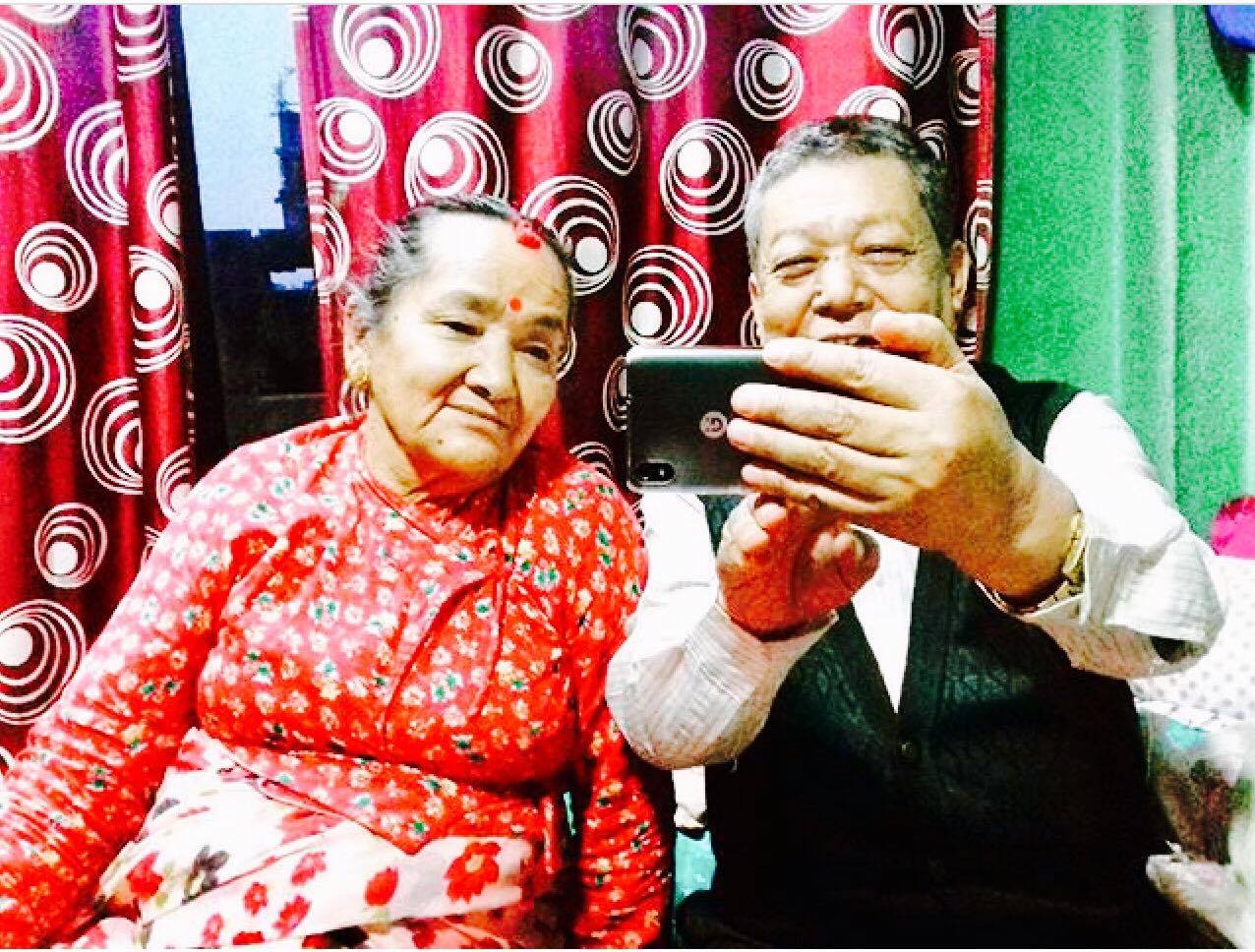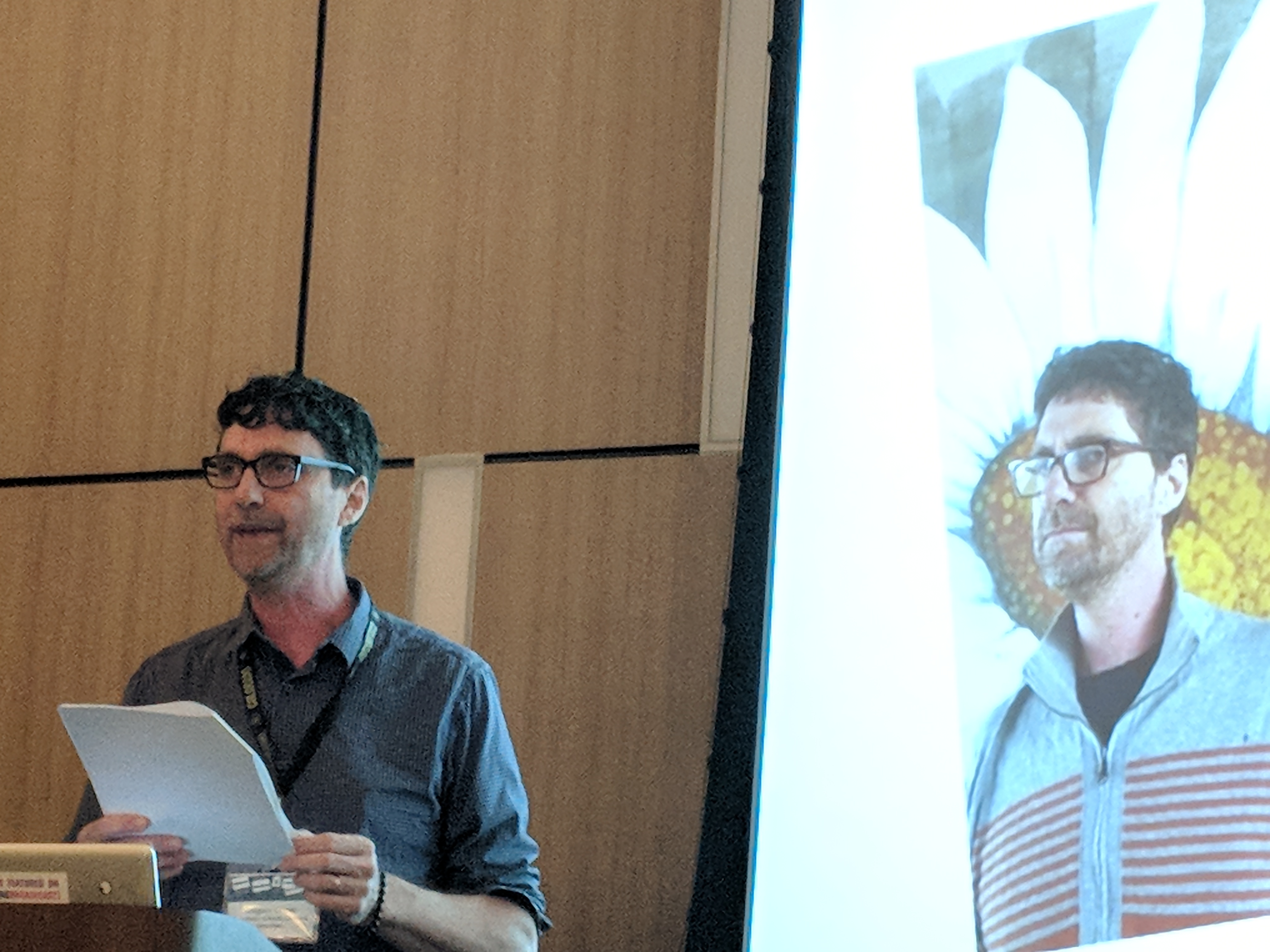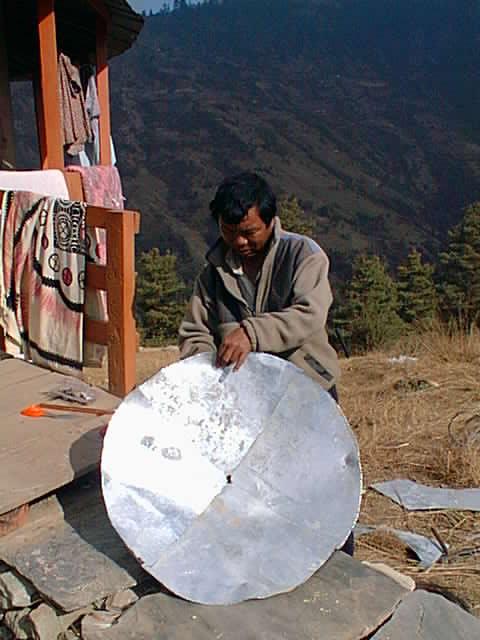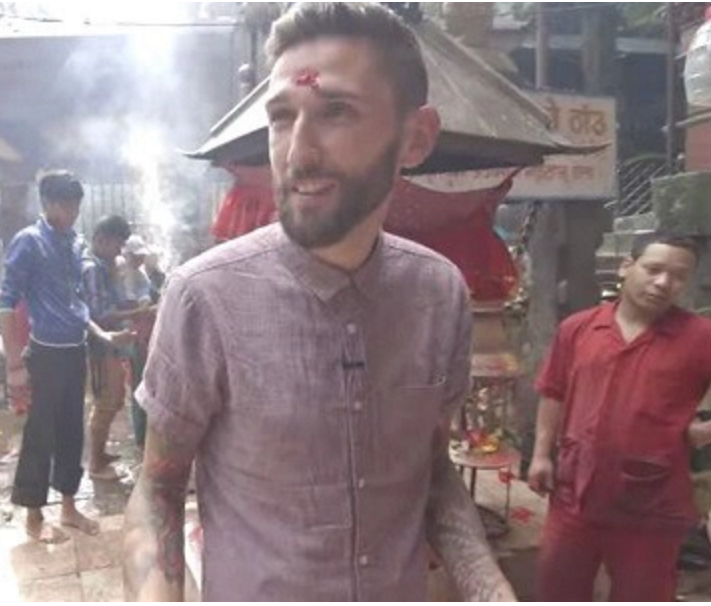Escaping Shangri-La:
Global Difference and Disjuncture in Nepali Game Development
Gregory Price Grieve, University of North Carolina @ Greensboro
“For centuries many of Tibet’s [Western] devotees have most valued
not the people who live there but the treasures it preserves.”
Donald Lopez,
Prisoners of Shangri-La: Tibetan Buddhism and the West [1]
Supported by the University of Helsinki’s Future Development Fund, in the summer of 2017, I began the first stage of researching the role of cultural heritage and national identity in video game development in Nepal. My ongoing project investigates how the value-system of cultural heritage is implemented in video game narratives and utilized by game developers in Nepal’s Kathmandu Valley. Using the concept of media flows as an analytical lens, my study concentrates on the relationship between Nepali video development, cultural heritage, national identity and religion. While some work has been done on Nepal and Social Media [2], no academic accounts have yet been written about the relationship between Nepal and video gaming. This initial field report details approximately three weeks exploring game development in Kathmandu through semi-structured interviews and ethnography with individual game developers and game developer companies.

My study is still a work in progress and is in need of further data gathering and analysis. Yet, as a first step in this field report, I ask, “How is Nepal represented in video games?” To answer this question, I compare an AAA American video game set in Nepal, Far Cry 4 (Ubisoft, 2014), to a game developed by a Nepali team, polyTricks (Arcube, 2016). Comparing games such as Far Cry 4 and polyTricks is crucial, because video games are a value-laden media that argue rhetorically for particular moral visions. In global media, Nepal is often posed as an underdeveloped traditional nation, full of picturesque poverty, over-determined with religious culture, and blessed with beautiful Himalayan landscapes. Studying locally designed Asian games illustrates the value-systems of actual people rather than the reiterated arid landscape of often-essentialized orientalist visions of Asia. While circulated as mere entertainment, local games such as polyTricks are weapons of the weak that resist the often-implicit dominant hegemonic view of Asia that many AAA video games proffer [3]. As Nick Dyer-Witheford and Greig de Peuter argue in Games of Empire: Global Capitalism and Video Games, gaming embodies the cultural, political, and economic forces of global capital, while also providing a means of resistance. [4]
| Fry Cry 4’s developers approached Nepal as a place pre-imagined by fantasy. They found there what they already knew. The game pictures Nepal not only as pre-modern, but somehow outside of time. A Shangri-la that offers, with an almost desperate longing, an untouched ancient wisdom by which those in the West can be redeemed. The developer see Nepal as a location to find oneself, by breaking from the scripted routine – Late capitalism’s soul-crushing wage-labor, ant-like corporate careers, and shallow consumerism. | The makers of polyTricks depict Nepal as underdeveloped, corrupt, and peripheral to the world economy, but a land of immense beauty (mountains), cultural heritage (temples) and potential for economic development. |
|---|---|
Before we continue, let me briefly describe the two games. Far Cry 4, developed for consoles and Microsoft Windows, is an open world, first-person shooter game, which takes place in Kyrat, a fictional Himalayan country, and follows the protagonist, Ajay Ghale as he is caught up in a civil war. PolyTricks, developed as an Android mobile application, is an endless-runner game, in which the player can tilt their device left or right to move the character across the screen. It follows a corrupt politician as he works his way from rookie to president. Thus far I have played through both games and analyzed player comments on several websites. I also engaged in a month of ethnography with the Arcube game design team, interviewed fifty people about game play in Nepal, and interviewed twelve game designers in Nepal. I still need to interview members of the Far Cry 4 design team, as well as create online surveys for both games.
To understand the different roles that cultural heritage and religion play between how Nepal is depicted in Far Cry 4 versus polyTricks ks, I use the theoretical concept of “flow.” In “Disjuncture and Difference in the Global Cultural Economy,” the anthropologist and globalization theorist, Arjun Appadurai, argues that our complex, overlapping, and disjunctive global order can no longer simply be understood in terms of a static center-periphery model: global versus local, East versus West, or even metropolitan versus rural [5]. Rather, our condition ought to be modeled as “cultural flows,” a concept that refers to the multidirectional movements of people, material objects, capital, images, concepts, information, and technologies within global, national, and regional areas. Traveling as they form different combinations of hybrid-interdependencies which mutate existing social and political structures, the trajectories of cultural flows are not bounded territorially, but describe ever-changing cultural landscapes, that tend to erase imagined boundaries and reform existing institutions.

In my own recent work, I have wed the theory of cultural flows with that of media flows. Through my semiotic theory of Applied Rheology, I employ the concept of “media flow” to tease out the contextualized, embodied experience of playing and studying video games. [6] I maintain that our sub-field’s subject of study, video gaming and value systems, is not a neatly framed area but an open one that scholars (outsiders) and the players and designers (insiders) create together. The word rheology is formed from the Greek rhéō, “flow” and -λoγία, -logia, “study of.” I poach the term Rheology for the study of video games and value systems from the discipline of physics, where it deals with the analysis of flows of matter, especially the flows of liquids and the plastic flows of solids. By a media flow, I theorize how users attend specific media. Media flows consist of three elements: the material medium, semiotic systems and the cultural and social context. Media flows like, currents in a river, have a direction, duration, strength, and resistance.
As I use it here, a media flow is a refinement of my concept of a media practice. [7] Practice describes how social beings, with their diverse motives intentions, make and transform the world in which they live in a dialectic between social structure and human agency working back and forth in a dynamic feedback loop. That is, social practices are, to paraphrase the French sociologist, anthropologist, and philosopher, Pierre Bourdieu, structured and structuring [8]. A media practice is an activity such as reading a book; watching television or film; listening to the radio; or screening a computer, smart phone, or other digital device. Media practices do not merely transmit content but rather are the performance of embodied social activities that users execute with varying degrees of regularity, dexterity, and flair. Media practices emerge from a relationship between possible human action, on one hand, and systems of communication, on the other, and describe how social beings, with their diverse motives and their diverse intentions, tactically use the technologies of communication at hand to make and transform the realities in which they live.

The theoretical concept of “flows” enable the articulation of the specific media practices that compose the play of Far Cry 4 and polyTricks. Flows do not lead to a monocultural standardization akin to a modernization thesis, which foretells the erasure of all cultural particularity. Rather, the concept articulates hybrid fusions, and the clashes of diverse “scapes” manifest by our dynamic global condition. As Appadurai suggests, in “Disjuncture and Difference in the Global Economy,” the problem today is a tension between cultural homogenization and heterogenization. Homogenization maintains that globalization leads to an American-led standardization of the world in which everything will become just more of the same. Heterogenization, on the other hand, describes how local dynamics “indigenize” global flows generating diffuse identities, generating new possibilities for intercultural dialogues. Unlike other branches of globalization theory, flows do not establish culture as a single system of collective values and practices. Instead, the concept highlights the multiplicity of cultural trajectories through time and space, and the power individuals and collectivities have to create, destroy, and reinvent themselves and others. Flows articulate creativity both in organized and non-organized forms, illuminating the interconnected production and consumption of culturally specific goods and ideas. That is, how players and designers assign new meanings to media flows in a process that transforms them into symbolic producers and grants them with some agency and belonging to a consumer community.
As seen in the play of Far Cry 4 versus polyTricks, flows, however, are all not created equal, have different strengths and durations, and remain unevenly distributed across the globe. To explore the tension between homogenization and heterogenization, Appadurai employs a number of concepts describing cultural flows: the human migration of ethnoscapes, the technological configurations of technoscapes, the global business networks of finanscapes, the concatenations of images or ideoscapes, and the cultural industry of mediascapes.

“Ethnoscape” defines the landscape of persons who constitute our shifting world: tourists, immigrants, refugees, guest workers and exiles. As Appadurai writes, “By ‘ethnoscape,’ I mean the landscape of persons who constitute the shifting world in which we live.” [9] Nepal’s ethnoscape is defined by two flows: tourists flooding in from developed nations, and Nepali guest workers flooding out to mainly work in Malaysia and the Gulf States. Tourism in Nepal has had three distinct phases: a 1950-1965 Post-Indian independence Raj-like throwback; a 1965-1975 cultural Hippie destination; and finally a 1975 onward rebranding of Nepal as an adventure and dharma tourist destination. [10] I have not yet researched the effect of guest workers on video game design, and this will be a fruitful area for future research. What is important for the current study, however, is that the flow of people outward from Nepal, shows that the nation is not an isolated country but actually has one of the highest rates of international travel in the world, and is heavily entangled with the global economy. Moreover, this is not a modern phenomenon. For hundreds of years Nepalis have been long distance traders, and have also served as Ghurkas in the British Empire. What is important for understanding Far Cry 4 , is that Tourists picture, and Nepal’s tourist industry sells the nation as a “Shangri-La,” as a spiritual place outside of time, and this conception of Nepal is a key part of Far Cry 4 ’s game play. As the games narrative director, Mark Thompson said in an interview [11]:
“We didn’t know much, but we went for a two-week trip to Nepal, getting lost in the culture, meeting crazy characters, going to situations that were uncomfortable and beautiful, and kind of mind expanding in that kind of cheesy ‘I went to the East and found myself’ kind of way . . . . I know it sounds like bull . . . but you go to places that are so beautiful that you start to think about mind-expanding, esoteric stuff.”

A second term is “technoscape,” by which Appadurai means “the global configuration, also ever fluid, of technology, and of the fact that technology . . . now moves at high speeds across various kinds of previously impervious boundaries” [12]. Technologically, the major difference between the two games, is that Far Cry 4 is made for consoles while polyTricks is designed for mobile phones. Far Cry 4 is a AAA studio game, which had over 200 people as part of the production process. Ubisoft, the makers of Far Cry 4 , is a French video game publisher headquartered in Montreuil. Founded in 1986, Ubisoft is a mature video game company whose global reach has both retail and downloadable distribution. PolyTricks on the other hand was designed by Arcube, which is part of Nepal’s design industry, which is still in its infancy. Arcube, founded in 2015, had a design team of less than five individuals, and was one of only a dozen or so research teams working on games in Kathmandu Valley. All the game designs in Nepal, were fairly simple, but still pushed the envelope of what was technological possible with limited means. The Nepali game design depended on the rise of mobile phones. At the time of writing, the number of mobile subscriptions has outnumbered Nepal’s population with a penetration rate which has hit 105.15 percent of the population. [13]
A third important term is “mediascape,” which defines the flow of information and images. As Appadurai writes, mediascapes refer to “the distribution of electronic capabilities to produce and disseminate information.” [14] In both Far Cry 4 and polyTricks cultural heritage plays a key aspect of what Appadurai calls “image-centered, narrative-based accounts of strips of reality.” [15] In Far Cry 4 Nepal is viewed through a romantic lens, again as a timeless Shangri-la. In polyTricks there is a keen awareness of Nepal being on the edge of global culture, and a desire to display Nepal’s natural beauty and culture. One of the chief differences between the two games is how they use religion. In Far Cry 4 religion is a key element by which the game developers imagine the landscape, on an audio-visual, narrative, and procedural level. The most obvious example is that in the game the player can enter through thangka paintings, the mystic land of Shangri-la itself. PolyTricks, on the other hand, does not engage with religion in any way. While there are religious mobile apps, no Nepali games that engage with religion exist.
A fourth term is “finanscapes” that describes the flow of capital around the globe. Because, as Appadurai writes, “even an elementary model of global political economy must take into account the shifting relationship between perspectives on human movements, technological flow and financial transfers”[16]. Far Cry 4 is part of a worldwide global system of production and distribution worth over a trillion dollars this year. PolyTricks, on the other hand, is a self-funded small community that is hampered by Nepali e-commerce laws.
Finally, Appadurai’s uses the concept of “ideoscape,” which defines how images are used for political and ideological effect. Far Cry 4 simmers with a romantic orientalism, while polyTricks is a conscious eco-political critique—lambasting both politicians and environmental degradation in Kathmandu. Far Cry 4 ’s developers approached Nepal largely as a place of pre-imagined fantasy. There they found what they already knew. The game pictures Nepal not only as pre-modern, but somehow outside of time; a Shangri-la that offers, with an almost desperate longing, an untouched ancient wisdom by which the West can be redeemed. The developers see Nepal as a place in which Westerners can find themselves, by breaking from the scripted routine – late capitalism’s soul-crushing wage-labor, ant-like corporate careers, and shallow consumerism. The makers of polyTricks s depict Nepal as underdeveloped, corrupt, and peripheral to the world economy, but a land of immense beauty (mountains), cultural heritage (temples) and potential for economic development. As Rabin Shilpakar, Arcube’s team leader said,
“The main purpose to build this game is to uplift the gaming industry in Nepal. The gaming industry can be next career building opportunities for many IT students and artists. The gaming industry can help us to present our folk, mythological stories, our history, culture, [and] art in the form of the game. This can also educate our current generation, future generations to come and entertain them as well.”

Nepal, like any nation-state, is not just a physical location, but also an imagined place created and held together by various media technologies and practices. The critical point is that Far Cry 4 and polyTricks are two sides of global flows that are produced in a contest between sameness and difference that is characterized by radical disjunctures. What is new, is that enabled by mobile technologies, more and more of these flows includes video games made by Nepalis. How Nepal differs from other Asian nations is that the fantasy of “Shangri-La” is a challenge, which gives it both problems and opportunities. In short, video games are not something that has happened to Nepal, but are an encounter between groups that share complex, historically constituted mediascapes. Nepali game development is not derivate or imitative, but rather contemporaneous and active.
References
[1] Donald Lopez, Prisoners of Shangri-La: Tibetan Buddhism and the West (Chicago: University of Chicago Press, 1998), 5.[Back]
[2] Seth Bird, “Is the Smartphone Smart in Kathmandu”? Independent Study Project (ISP)Accessed Aug 24, 2018, http://digitalcollections.sit.edu/isp_collection. Merilin Piipuu, The Mobile Phone in The Hands Of The Nepalese People: A Humanistic Perspective Of Technology, Master thesis, University of Tartu Institute of Cultural Research and Arts Department of Ethnology, 2017.[Back]
[3] James Scott. Weapons of the Weak: Everyday Forms of Peasant Resistance (New Haven : Yale University Press, 1985).[Back]
[4] Nick Dyer-Witheford; Greig De Peuter. Games of Empire: Global Capitalism and Video Games (Minneapolis, MN : University of Minnesota Press, 2009).[Back]
[5] Arjun Appadurai, “Disjuncture and Difference in the Global Cultural Economy” (Theory, Culture & Society, 7[1990], 295-310).[Back]
[6] Gregory Grieve, “Applied Rheology and Sara is Missing,” Presented at the International Society for Media, Religion and Culture (ISMRC), Boulder CO, August 2018.[Back]
[7] Gregory Grieve. Cyber Zen: Imagining Authentic Buddhist Identity, Community, and Practices in the Virtual World of Second Life (London: Routledge, 2016), 217. [Back]
[8] Pierre Bourdieu. The Logic of Practice (Stanford CA: Stanford University Press, 1990).[Back]
[9] Appardurai 1990, 298.[Back]
[10] Mark Liecthy. Far Out: Countercultural Seekers and The Tourist Encounter in Nepal. (Chicago: University of Chicago Press, 2017)[Back]
[11] “To Nepal and Back: How Ubisoft Montreal Created A New Country,” Ubisoft Forums, accessed August 24,
[12] Appardurai 1990, 297.[Back]
[13] Nepal Telecommunications Authority. MIS Report 2018, Accessed August 24, 2018. [Back]
[14] Appardurai 1990, 298.[Back]
[15] Appardurai 1990, 299.[Back]
[16] Appardurai 1990, 298.[Back]

